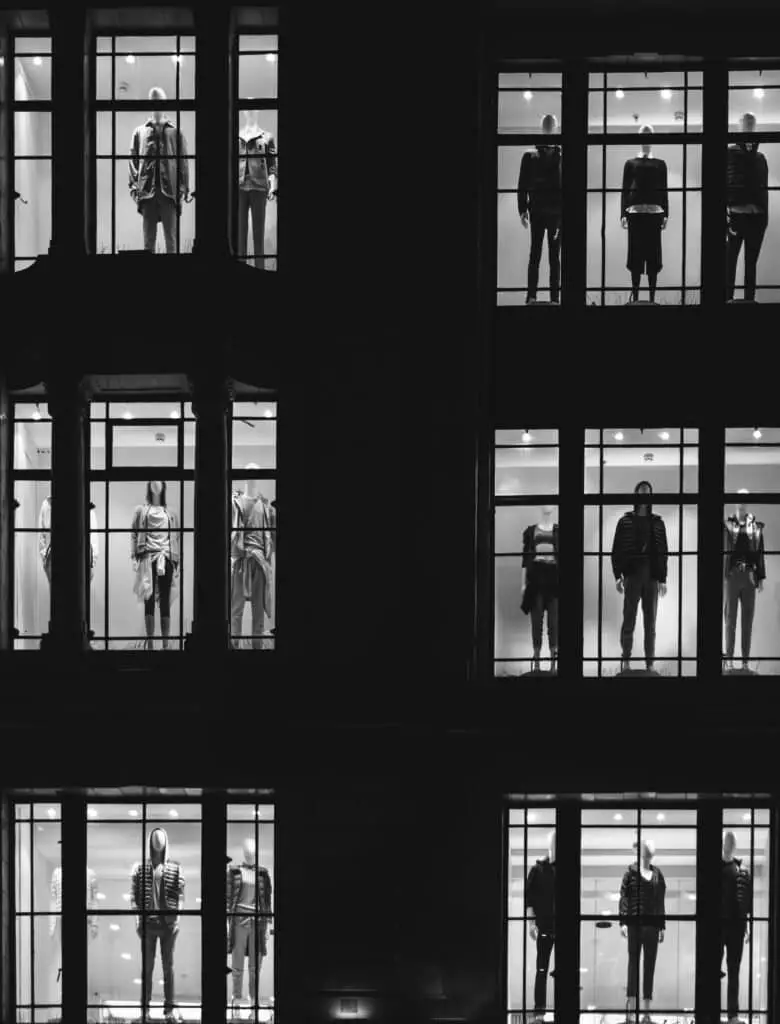Remember the days of big hair, neon colors, and leg warmers? Well, it seems that the nostalgia for the past is making a big comeback. From fashion to interior design, retro seems to be still all the rage. But with the ever-changing trends and the constant influx of new styles, you might wonder whether the retro craze is here to stay or just a passing fad. So, let’s take a closer look and unravel the mystery of whether retro is still in style.
Defining Retro Style
Understanding the Retro Aesthetic
Retro style refers to the revival or imitation of trends, styles, and designs from the past, particularly from the mid-20th century. It is characterized by a nostalgic longing for the fashion, music, furniture, technology, and overall lifestyle of previous eras. The retro aesthetic is all about capturing the essence of the past and incorporating it into contemporary contexts.
Historical Context of Retro Fashion
Retro fashion draws inspiration from various periods, including the ’50s, ’60s, ’70s, and ’80s. These were transformative decades in terms of cultural, social, and artistic movements, which greatly influenced fashion. Retro styles often reflect the spirit of these times, with unique silhouettes, bold colors, and experimental designs. Understanding the historical context of retro fashion helps us appreciate the significance and meaning behind each revival.
Difference Between Retro, Vintage, and Antique
While the terms retro, vintage, and antique are often used interchangeably, they have distinct meanings. Retro refers to new items that are designed or made to resemble styles of the past. Vintage, on the other hand, refers to items that were manufactured between 20 and 100 years ago, representing the authentic characteristics of a specific era. Antique denotes items that are over 100 years old, showcasing craftsmanship and design from a bygone era. Understanding the differences between these terms is essential when navigating the world of retro style.
Retro Style in Fashion
Retro Trends in Current Fashion
Retro trends in current fashion showcase the cyclical nature of style. Fashion designers often draw inspiration from the past, incorporating retro elements into their collections. From ’50s-inspired full skirts and polka dots to ’80s power shoulders and neon colors, retro trends continue to make waves on today’s runways. This fusion of old and new allows individuals to embrace nostalgia while still staying current.
Iconic Retro Styles That Are Back
Certain retro styles have stood the test of time and are now considered iconic. The little black dress, popularized by Audrey Hepburn in the 1961 film “Breakfast at Tiffany’s,” remains a timeless staple in every woman’s wardrobe. The mod fashion of the 1960s, characterized by mini skirts, geometric prints, and go-go boots, has also made a strong comeback. Other iconic retro styles include the flapper dresses of the 1920s, the glamorous Hollywood-inspired gowns of the 1930s, and the rebellious leather jackets of the 1950s. These styles showcase the enduring appeal of retro fashion.
Influence of Celebrities on Retro Fashion Trends
Celebrities have always played a significant role in driving fashion trends, and retro styles are no exception. When celebrities are seen sporting retro-inspired looks on the red carpet or in their day-to-day lives, it sparks interest and inspires fashion enthusiasts. Whether it’s the vintage-inspired outfits of Taylor Swift or the ’70s bohemian flair of Vanessa Hudgens, celebrity influence has the power to bring retro fashion to the mainstream and influence the choices of everyday consumers.
The Sustainability Factor in Retro Fashion
In an era where sustainability is increasingly prioritized, retro fashion offers a unique and eco-friendly approach. By purchasing vintage or second-hand clothing, individuals can give new life to pre-loved garments and reduce the demand for fast fashion. Retro fashion also encourages creativity in upcycling and repurposing clothing, allowing for a more sustainable wardrobe. By embracing retro style, individuals can make a conscious effort to reduce their environmental footprint while still expressing their unique fashion sensibilities.

This image is property of images.unsplash.com.
Retro Style in Interior Design
Mid-Century Modern: A Classic Retro Interior Design
Mid-century modern design, which emerged in the mid-20th century, is one of the most popular and enduring retro interior design styles. Characterized by clean lines, organic shapes, and an emphasis on functionality, mid-century modern design is timeless and highly sought after. Iconic furniture pieces, such as the Eames Lounge Chair and the Noguchi Coffee Table, are recognized for their innovative design and have become symbols of the retro aesthetic.
Retro Elements in Modern Homes
Retro elements are often incorporated into modern homes to add character and create a sense of nostalgia. From vibrant wallpaper prints and geometric patterns to statement lighting fixtures and retro-inspired appliances, these design features transport us back in time while still maintaining a contemporary feel. By blending retro elements with modern aesthetics, homeowners can create a unique and personalized space that reflects their appreciation for the past.
How Retro Furniture Adds Character to Spaces
Retro furniture pieces have a charm and character that sets them apart from mass-produced contemporary designs. Whether it’s the sleek curves of a mid-century modern sofa or the intricate detailing of a vintage dresser, retro furniture adds a touch of nostalgia to any space. The craftsmanship and quality of these pieces make them not only visually appealing but also long-lasting, making them a worthwhile investment for those looking to infuse their homes with retro style.
Shopping Vintage: An Eco-friendly Interior Design Trend
Similar to retro fashion, the trend of shopping vintage in interior design aligns with sustainability values. By purchasing vintage furniture and decor items, individuals can give them a second life while reducing the environmental impact of the manufacturing process. Vintage shopping also allows homeowners to find unique and one-of-a-kind pieces that add character and personality to their spaces. The embrace of vintage in interior design demonstrates a conscious shift towards a more environmentally friendly approach.
Retro Style in Technology
Nostalgia-Driven Tech Trends, From Vinyl to Polaroids
In recent years, various tech trends have emerged that cater to our nostalgia for retro technology. The resurgence of vinyl records, for example, appeals to audiophiles and music enthusiasts who appreciate the warm, authentic sound that vinyl offers. Similarly, the revival of instant cameras like Polaroids brings back the joy and anticipation of tangible photographs in our digital age. Nostalgia-driven tech trends provide an opportunity to bridge the gap between the past and the present, satisfying our appetite for the familiar.
The Appeal of Retro Gaming
Retro gaming has experienced a significant resurgence, with both young and old embracing classic video games of the past. The simplicity and nostalgia associated with retro gaming consoles, such as the Atari or Nintendo Entertainment System, provide a refreshing break from the complexity and realism of modern gaming. Retro gaming allows individuals to revisit beloved childhood memories or discover the magic of retro games for the first time, creating a sense of connection across generations.
Retro Futurism: Technology Inspired by the Past
Retro futurism is a concept that combines elements of the past with futuristic design and technology. It imagines what people from the past believed the future would look like and often features sleek lines, chrome accents, and futuristic shapes reminiscent of mid-century modern design. From retro-inspired smart appliances to concept cars with a nostalgic twist, retro futurism offers a unique blend of vintage aesthetics and technological advancement.

This image is property of images.unsplash.com.
Retro Style in the Automotive Industry
Classic Cars and Their Modern Counterparts
Classic cars are arguably the epitome of retro style in the automotive industry. These timeless beauties from the past continue to captivate car enthusiasts and collectors around the world. The sleek curves of a 1960s Chevrolet Camaro or the elegant lines of a 1950s Cadillac Eldorado evoke a sense of nostalgia and admiration. In recent years, automotive manufacturers have also introduced modern versions of these classic cars, combining vintage flair with advanced technology and engineering.
Motorcycles with Retro Charm
Motorcycles with retro-inspired designs have gained popularity among riders who appreciate the aesthetics and simplicity of vintage bikes. From café racers and bobbers to scramblers and vintage-inspired cruisers, these motorcycles capture the spirit of the past while offering modern performance and reliability. Retro motorcycles not only provide a unique riding experience but also serve as a statement of personal style and individuality.
Retro-inspired Electric Cars: A Mix of Old and New
Electric cars are the latest addition to the retro style in the automotive industry. Some manufacturers have embraced the concept of retro-inspired design by combining electric propulsion with classic aesthetics. These electric cars may feature design elements reminiscent of vintage models, such as rounded contours, chrome accents, and retro-inspired interior details. This fusion of old and new offers car enthusiasts an environmentally friendly option that pays homage to the past.
The Psychology Behind Retro Style’s Popularity
The Nostalgia Factor
The popularity of retro style can be attributed, in large part, to the nostalgia factor. Nostalgia is a powerful emotion that evokes fond memories and a longing for the past. By embracing retro fashion, interior design, technology, and automotive trends, individuals can tap into these nostalgic feelings, reconnecting with a sense of familiarity and comfort. Retro style allows us to relive or experience the aesthetics, sounds, and experiences of a bygone era, providing a sense of escape and emotional connection.
The Allure of Simplicity and Authenticity
Amidst the complexity and fast-paced nature of modern life, retro style offers a sense of simplicity and authenticity that many find appealing. Retro designs often prioritize functionality and craftsmanship, emphasizing quality over quantity. This focus on simplicity resonates with individuals seeking to declutter their lives and find joy in the simpler things. The authenticity of retro style also provides a welcome contrast to the homogeneity of mass-produced, disposable products in our current consumer culture.
Retreat from Modern Austerity
In a technological and digital age, where innovation often comes at the cost of personal connection, retro style offers a retreat from modern austerity. It represents a return to an era when things were perceived to be simpler, more genuine, and closer to nature. By embracing retro style, individuals can create a sense of balance and counterbalance the impersonal nature of technological advancements. The desire for a more tangible and human connection is reflected in the resurgence of retro fashion, interior design, technology, and automotive trends.

This image is property of images.unsplash.com.
Commercial Impact of Retro Style
The Propelling Force of Retro Marketing
Retro style has a significant commercial impact, with brands utilizing its nostalgic appeal to engage with consumers. Retro marketing often capitalizes on the emotional connection individuals have with the past, using iconic designs, vintage-inspired advertisements, and references to popular culture to evoke nostalgia and create positive associations with their products. By tapping into the power of retro style, brands can differentiate themselves in a crowded market and create memorable experiences for consumers.
Retro Branding: A Trip Down Memory Lane
Retro branding refers to the use of design elements, packaging, and advertising that harken back to a specific era. By utilizing vintage-inspired graphics, typography, and colors, brands can evoke nostalgia and establish an image that resonates with an audience’s aspirations or desires for a simpler time. Retro branding creates a sense of authenticity and relatability, leading to increased brand loyalty and consumer engagement.
Success Stories of Retro-inspired Products
Several success stories demonstrate the impact of retro-inspired products on the market. Nintendo’s reimagined NES Classic Edition successfully tapped into the nostalgia for retro gaming, resulting in a frenzy of demand and sold-out stock. Similarly, fashion brands like Gucci and Saint Laurent have embraced retro style in their collections and marketing campaigns, attracting younger consumers who appreciate the vintage-inspired aesthetic. These success stories highlight the enduring appeal of retro style and its ability to capture the hearts and minds of consumers across different industries.
The Timeless Appeal of Retro Music
Vinyl Records Making a Comeback
Vinyl records, once deemed obsolete by the CD and digital music revolution, have made a remarkable comeback in recent years. The resurgence of vinyl is driven by an appreciation for its warm sound, large album artwork, and the tactile experience of physically handling records. Collecting vinyl has become a hobby for many music enthusiasts, providing a sense of connection to the music and artists of the past. The enduring appeal of vinyl records demonstrates the timeless quality of retro music formats.
New Music with Old School Influence
In addition to the revival of retro music formats, there has been a resurgence of new music with old school influences. Genres such as soul, funk, disco, and rockabilly continue to inspire contemporary musicians, resulting in a fusion of old and new sounds. Artists like Bruno Mars and Sharon Jones and the Dap-Kings have embraced retro influences in their music, creating a refreshing blend of nostalgia and modernity. Retro-inspired music allows listeners to enjoy the familiarity of past eras while still experiencing something fresh and current.
Retro Music Festivals and Events
The popularity of retro music extends to the realm of live events and festivals. Retro music festivals, such as Coachella, Bonnaroo, and Glastonbury, feature performances by both legendary acts and emerging artists who draw inspiration from the past. These festivals provide a platform for individuals to come together and celebrate the music that shaped generations, fostering a sense of unity and collective nostalgia. Retro music festivals offer a unique opportunity for attendees to experience the magic of past eras and create lasting memories.
Is Retro Here to Stay?
The Ebb and Flow of Retro Love
The popularity of retro style has experienced periods of resurgence and decline throughout history. It ebbs and flows, much like any other trend. However, what sets retro style apart is its ability to consistently captivate and inspire new generations. The enduring appeal of retro style suggests that, while it may fade from the mainstream at times, it will always find a place in the hearts of those who appreciate its timeless charm and nostalgic allure.
Retro in the Future: Predictions and Possibilities
As we look ahead, it is likely that retro style will continue to evolve and adapt to the changing times. The cyclical nature of fashion, design, and culture ensures that elements of the past will always resurface in new and exciting ways. Retro technology, for example, may become more seamlessly integrated with cutting-edge advancements, creating a fusion of vintage aesthetics and modern functionality. Retro music and fashion will continue to influence new artists and designers, resulting in a constant reinvention of the past.
Contributions of Social Media to Retro’s Longevity
Social media has played a significant role in the resurgence and longevity of retro style. Platforms like Instagram and Pinterest have served as digital archives for vintage fashion, interior design, and music, allowing individuals to discover and share their love for the past. Social media has enabled retro enthusiasts to connect, collaborate, and showcase their own retro-inspired creations, further fueling the popularity of retro style.
Challenges and Critiques of Retro Style
Is Retro Harming Innovation?
One critique of retro style is that it may stifle innovation and creative progress. By constantly looking to the past for inspiration, there is a risk of inhibiting new ideas and designs. Critics argue that retro style can create a stagnant culture that is resistant to change and forward-thinking. However, it is essential to recognize that retro style can also serve as a foundation for innovation, providing a starting point for reinterpretation and pushing the boundaries of what is possible.
The Risk of Over-Nostalgia
While nostalgia can evoke pleasant memories and emotions, an excessive focus on the past can hinder personal growth and development. Over-indulging in retro style may lead to an idealization of the past, distorting our perception of reality. It is important to strike a balance between embracing retro style and living in the present, appreciating the past while looking towards the future.
Sustainability Concerns in Retro Manufacturing
While retro style often aligns with sustainable practices such as vintage shopping and upcycling, there are sustainability concerns in the manufacturing of retro-inspired products. The production of new items with a retro aesthetic may contribute to unnecessary resource consumption and waste. It is crucial for manufacturers and consumers to prioritize ethical and sustainable practices when embracing retro style, ensuring that it does not come at the expense of the environment.
In conclusion, retro style continues to hold a prominent place in various aspects of our lives, from fashion and interior design to technology and automotive trends. Its nostalgic appeal, timeless charm, and connection to the past have captivated generations, allowing us to relive and reinterpret the aesthetics and experiences of bygone eras. While the popularity of retro style may ebb and flow, its enduring nature and ability to adapt to the changing times suggest that it will always have a place in our hearts and in the world of design and culture. As we move forward, the challenge lies in striking a balance between honoring the past and embracing innovation, while also prioritizing sustainability and personal growth. In doing so, we can continue to appreciate and celebrate the rich heritage and timeless appeal of retro style.

